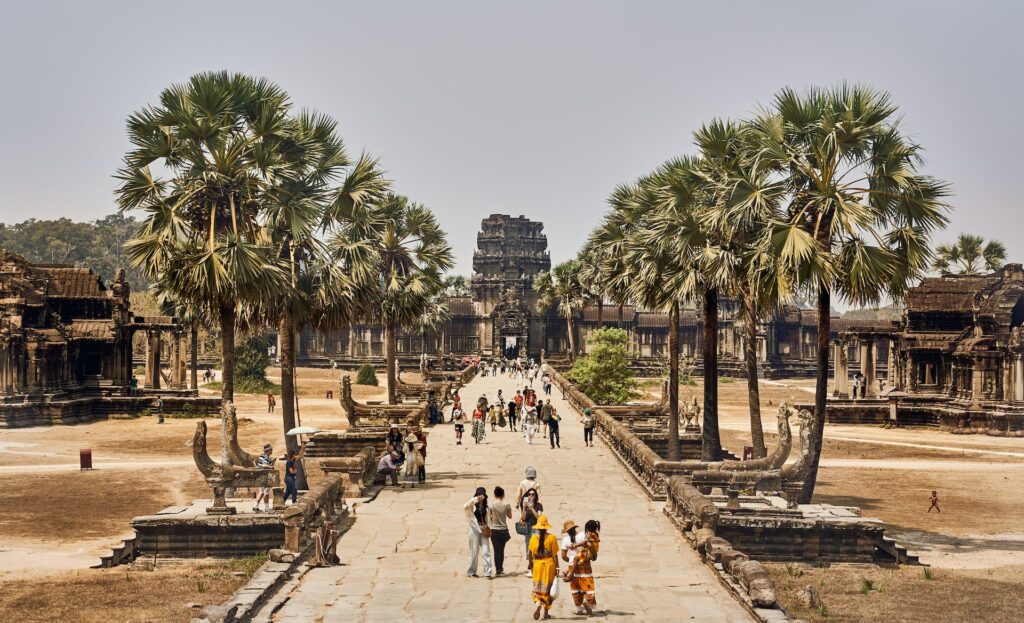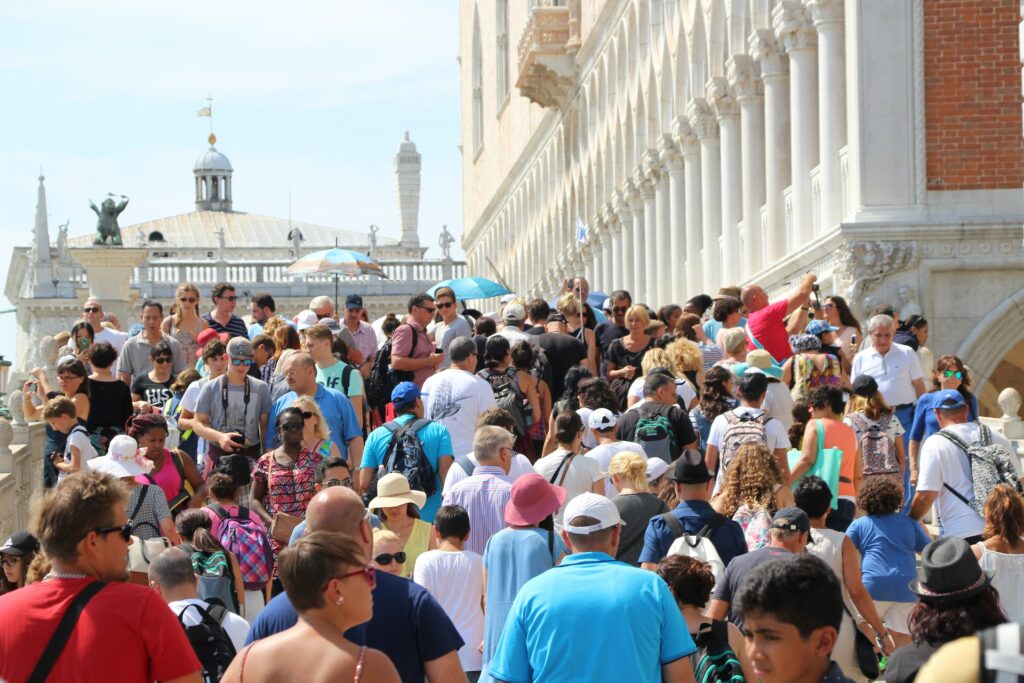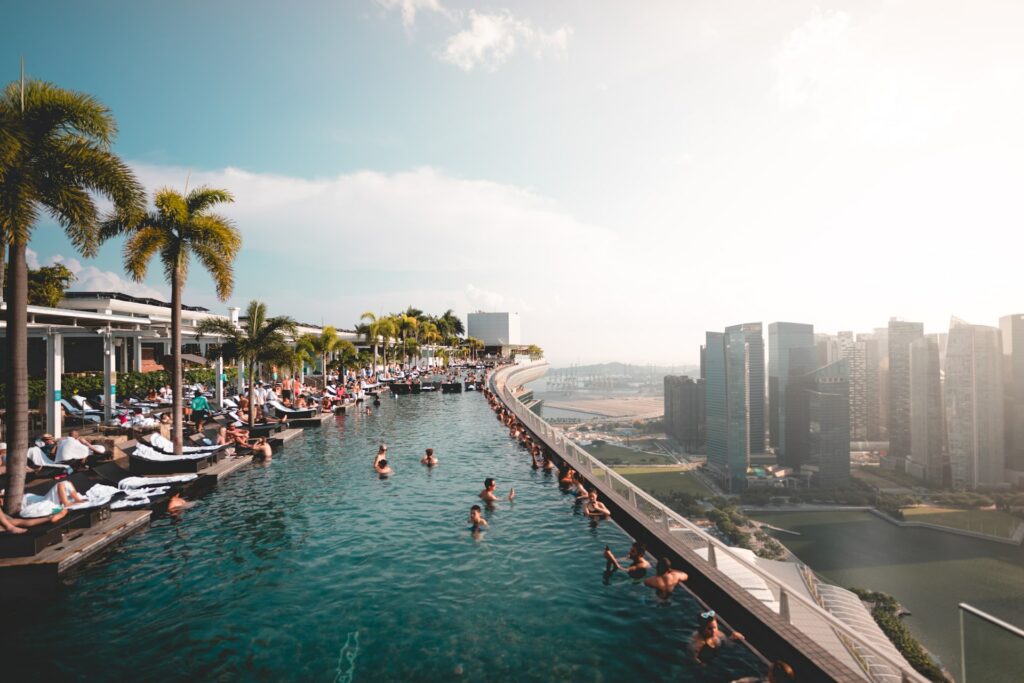Sustainable tourism is a tricky topic – one that involves a fair amount of greenwashing and vague definitions. Let’s dive in…

What’s the definition of sustainable tourism?
The United Nations World Tourism Organisation describes sustainable tourism as the following:
“Tourism that takes full account of its current and future economic, social and environmental impacts, addressing the needs of visitors, the industry, the environment and host communities.”
UNWTO
UNWTO goes on to specify that sustainable tourism should:
- Protect nature – “Make optimal use of environmental resources that constitute a key element in tourism development, maintaining essential ecological processes and helping to conserve natural heritage and biodiversity.”
- Honour locals – “Respect the socio-cultural authenticity of host communities, conserve their built and living cultural heritage and traditional values, and contribute to inter-cultural understanding and tolerance.”
- Benefit everyone – “Ensure viable, long-term economic operations, providing socio-economic benefits to all stakeholders that are fairly distributed, including stable employment and income-earning opportunities and social services to host communities, and contributing to poverty alleviation.”
This isn’t to say the definition is clear-cut or universally agreed – the term is wide open to interpretation.
Is it the same as ecotourism or responsible travel?
Ecotourism tends to refer to tourism in areas of nature – safaris, for example.
Responsible travel has an emphasis on the behaviour of the traveller.
Sustainable tourism is more of a general term that includes both ecotourism and responsible travel ethics and values.

What are some examples of sustainable tourism?
An example of sustainable tourism might be a community-run lodge in a rainforest. Local people have ownership and can manage tourism to suit their needs and customs. And because tourists are travelling to see the rainforest and its wildlife, there’s economic reward in protecting the ecosystem against logging companies, for example.
Or it could be a renewable energy-powered countryside hotel that’s easily accessible by public transport, where all produce, furnishings and services are provided by the local communities.
And an example of unsustainable tourism?
Think about popular European cities – the numbers of visitors these cities receive are often unsustainable, as it becomes unpleasant for residents and tourists themselves. This is especially true when port cities also receive day-trip cruise passengers who don’t use local hotels and usually dine on board, meaning their value to residents is minimal.
Or consider protected areas – such as most safari destinations – where local people can’t access land that’s rightfully theirs and don’t have any ownership of tourism operations. Who’s benefitting in that situation?

Who decides if something is sustainable tourism?
There are several bodies that award ‘sustainable tourism’ certifications, but due to various definitions, criteria and processes, they cannot be considered equal.
Different areas and groups of people also have diverse challenges, needs and circumstances, all of which make it tricky to standardise the answer to ‘what is sustainable travel?’.
It’s also difficult to know when a hotel or tour operator is being genuine about their impact – as with all businesses, greenwashing is rife.

What’s the fix?
Certifications can help as a guide, but there are some key things travellers can consider independently.
Transport
Although sustainable tourism often focuses on the destination itself, how you get there also matters from an environmental point of view.
If it’s a long-haul flight plus extra domestic flights, you’re already starting the trip with a big carbon footprint. That’s not to say don’t ever fly long-haul, but if you’re a frequent flyer, you might want to cut back on the number of big trips you do each year.
If you live in part of the world with a good rail network, look at your options for visiting different countries or regions by train.
Even if you need to fly internationally, travelling overland domestically is a good way to cut back on your overall carbon footprint – whether that’s catching the train from place to place, or cycling and walking around a city. Look for destinations that have this kind of infrastructure.
Ownership and management
Who owns the accommodation or tourism operation? Favour those owned and run by local people.
It’s very hard to assess whether employees are paid fairly – at the very minimum, a living wage. There are some accreditations that can help (for example, South Africa’s Fair Trade Tourism), but this is definitely an area of endorsement that’s lacking internationally.
Energy and water
You’re looking for accommodation that is as low impact as possible. Is the hotel powered by solar? Do they pump raw sewage straight out into the ocean? Do they have any policies regarding their use of air-conditioning? Generally, speaking a sustainable hotel will have this information on their website because it’s important to them. If they don’t, ask for more information before you book.
If you’re travelling to a drought-prone area, accommodations should have grey water and rain catchment systems, and evaporation covers on the pool (if there is one). Be sceptical of places in dry environments with private plunge pools and bathtubs.

Plastics and produce
Look for zero – or at least limited – single-use plastics and locally sourced produce, where possible.
Recycling and waste
Hotels can create heaps of waste. What happens to leftover buffet food, for example? Are there giant platters of fruit that just sit and rot in your room? It’s important to know what happens behind the scenes. Not that you should have to go snooping – any place with solid policies should make this clear on their website or at least be able to tell you over an email.
Local impact
How would you feel if you lived in or around the area to which you’re travelling?
If it’s a mass tourism destination, is there a quieter alternative, or a time of year with fewer visitors?
If it’s a protected area, are locals allowed access? Are they managing the operations? Or have they been removed from the land to make way for tourism? This is a big consideration when thinking about who benefits.
These are just some of the many aspects to sustainable tourism – yes, it’s a big, complicated topic!
We recommend looking for places that aim to be sustainable and positive across a wide array of areas – not just doing one or two things to promote themselves as ‘green’.
What else is a major issue in sustainable tourism? Who’s doing a good job? Comment below!
Sources
Global Ecotourism Network, About certification
Global Sustainable Tourism Council, What is Sustainable Tourism?
United Nations World Tourism Organisation, Sustainable development

